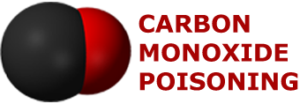FAQ: How do lawyers prove brain damage in someone who survives carbon monoxide but is discharged from the hospital with a clean bill of health less than a day later?
Short Answer: With a combination of objective diagnostic tools like MRI and vestibular testing and neuropsychiatric assessment of the change in the poisoned person’s function in day to day life, across these crisscrossing domains of brain damage.
From our video carbon monoxide poisoning, video podcast between Brain Injury Law Group’s attorneys, Gordon Johnson and Griffith Winthrop:
Griff, how do we prove brain damage in someone who’s walked out of a hospital 12 hours after poisoning?
Griff Winthrop: That is the challenge. And it’s the challenge that you and I face every day with our clients. To the naked eye, to somebody who’s never met them before, 0ften times they seem quite normal. Proving that they aren’t normal is the most challenging thing we do in these cases. By the time we get to that point we’re trying to prove it to an insurance adjuster or we’re trying to prove it to a jury, it is the missing element to a major case. We at that point will have already established liability and the fact that our clients, at least acutely, were poisoned.
We will have proven the cause and origin issues of where the carbon monoxide came from, how the negligence of the defendant created it. And now we’re at the point of asking the jury or asking whoever’s going to be writing that check to assign a value to something that at first blush, appears normal. It gets quite involved.

How do lawyers prove brain damage in someone who survives carbon monoxide? By engaging using objective diagnostic measurements to test the change in brain tissue and neurological function, and by medical assessment of the change in the poisoned person’s function in day to day life, across these crisscrossing domains of brain damage.
We are among a handful of lawyers that handle these types of cases, largely because of this reason. We have to run our clients through some very challenging and sometimes exhausting diagnostics that that show from multiple medical disciplines deficits in the brain in the brain starting, oftentimes with neuro-optometry, audiometry, speech/language pathology, neuropsychology, and of course, the brain scanning MRIs.
We use all of these diagnostic tools to measure whether or not there’s actual visible pathology in the brain and how deep it goes, as well as chemicals that are in the bloodstream that, that are tested. And of course, vestibular that is balance of, of the individual.
Gordon Johnson: The most significant problem for those who survive carbon monoxide poisoning is brain damage. Brain damage is a risk factor for anyone who survives any poisoning where a CO alarm sounded. The alarm is designed to sound when COHb levels get to 10%. If COHb levels get to 10%, there is a 40% risk of permanent brain damage, regardless of how much higher the COHb level may be. Those with a 10% COHb have a similar risk of brain damage as those with a 40% COHb level. [1] Chambers, et. al. postulated the reason:
It is also possible that ‘less severe’ and ‘more severe’ as measured by the COHb level and loss of consciousness simply are not the relevant factors as any CO exposure can activate inflammatory and biochemical cascades leading to brain injury and its associated cognitive and affective problems.
While we do not want to underestimate the severe risk factors of those with high COHb levels, the more important point is that as far as brain dysfunction, those with what would be considered mild or harmless exposures are at comparable risk of long term problems. Making it even more of a concern with those whose levels are below 25% is that they are unlikely to be referred to HBOT therapy, further reducing their chances of a recovery.
Brain damage impacts everything that we do. The brain controls how we move, how we think, how we behave, how we feel. Our brains are who we are. About a decade ago, I did a series of interviews and essays based on the voices of those who had survived brain damage. I began that series with the story of Angela, a traumatic brain injury survivor, whose brain damage was comparable to what is seen in most carbon monoxide poisoning cases. Her words:
To say that recovery from brain injury is difficult would do no justice to the anguish that came from realizing that the strengths and skills responsible for leading me in a life of success were severely impaired or nonexistent. It has been devastating to realize what was left. Moving on meant saying goodbye to my best friend of 32 years – “ME” – the most difficult thing I could ever have be asked to do.
In a matter of seconds, I became a stranger to myself. I miss the old me so much that I question why I would survive the accident only to be forced to live in the shadow of my former self. But I know that the important parts of me were not lost even though it is a constant battle for me to find my way in a world that is moving so fast that I cannot keep up. https://tbilaw.com/tbivoices/brain-injury/
[1] CHELSEA A. CHAMBERS1, RAMONA O. HOPKINS1,2,3, LINDELL K. WEAVER2,4, & COLIN KEY1 Cognitive and affective outcomes of more severe compared to less severe carbon monoxide poisoning, Brain Injury, May 2008; 22(5): 387–395

Leave a Reply
Want to join the discussion?Feel free to contribute!